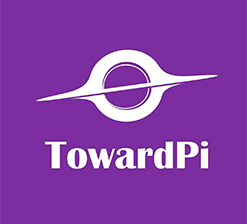
PDR with NVD 400KHz OCTA
- Categories:Gallery
- Time of issue:2021-11-10 16:34
- Views:
(Summary description)Fig1. Retina vessels OCTA image from proliferative diabetic retinopathy (PDR) patient. 24mm width single capture. Distinct massive range of non-perfusion area. A vessel cluster can be visualized in optic disc, which has different pattern than ONH vessel or radial peripapillary capillaries.
PDR with NVD 400KHz OCTA
(Summary description)Fig1. Retina vessels OCTA image from proliferative diabetic retinopathy (PDR) patient. 24mm width single capture. Distinct massive range of non-perfusion area. A vessel cluster can be visualized in optic disc, which has different pattern than ONH vessel or radial peripapillary capillaries.
- Categories:Gallery
- Time of issue:2021-11-10 16:34
- Views:
Fig1. Retina vessels OCTA image from proliferative diabetic retinopathy (PDR) patient. 24mm width single capture. Distinct massive range of non-perfusion area. A vessel cluster can be visualized in optic disc, which has different pattern than ONH vessel or radial peripapillary capillaries.

Fig2. Vitreous slab of the same scan. The only flow signal detected here is from above the optic disc region. The diagnosis of “neovascularization of the disc” (NVD) is just as simple and easy as one click.

Fig3. Flow quantification mode from Fig2. Flow area option. The software detects flow single from selected area automatically, then calculates the area of NVD. (1.49mm²) in this case. This function is useful for follow-up of treatment.

Fig4. There are 10 billion voxels from one 24mm TowardPi OCTA scan. Based on such huge 3D data, lots of different information can be extracted in accordance with requirements. Fig4 is structural enface of inner retina. We are able to see major vessels, microaneurysms and hard exudates, panretinal photocoagulation (PRP) spots scattered around macular and disc.

Fig5. Choriocapillaris structural enface. Laser energy here was absorbed more than in retina. That’s why PRP spots are larger and clearer.

Fig6. The same layer of Fig5, in flow display mode. Fine and smooth choriocapillaris flow in macular region and pitch-dark non-flow spots in peripheral from PRP therapy.

Fig7. Choroid structure layer. Laser spots are so eye-catching here.

Fig8. Flow mode of Fig7. The image is totally different than structural data even they are from the same level. The shadow of big vessels and laser spots are almost invisible. Instead, we can enjoy the fascinating vast view of vessels from Sattler's and Haller's layer. Which demonstrate the exceptional performance of TowardPi algorithm.

All images above are from one scan by TowardPi 400KHz SS-OCT system: “BMizar”. Single capture, no montage. 10 billion voxels provide excellent image details with acquisition time only about 15 seconds. Coverage area is even larger than traditional fundus camera and invasive angiography. Everything suggests the infinite future of this promising technology.
Image courtesy and endorsement from Prof. Youxin Chen (Peking Union Medical College Hospital, Beijing, China): "Highly praise TowardPi for your fast rising medical imaging technology. I believe this high-speed and high-resolution wide-field OCT Angiography will definitely change the procedure of ophthalmological practice world-widely!"
© TowardPi (Beijing) Medical Technology Ltd 京ICP备2021011388号-1 Powered by www.300.cn View business license







